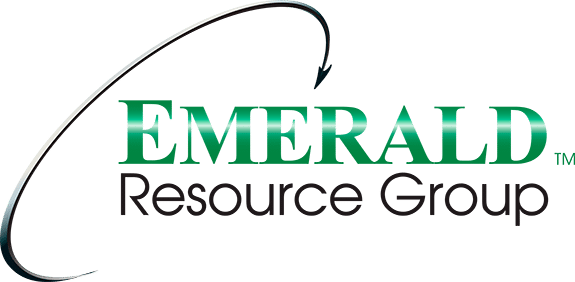Decoding the Updates: Understanding Recent Changes to GAAP
In the ever-evolving landscape of accounting standards, staying abreast of the latest changes in Generally Accepted Accounting Principles (GAAP) is paramount for financial professionals. Recent years have witnessed significant updates to GAAP standards, ushering in a new era of financial reporting and compliance. Let’s delve into the intricacies of these changes and equip ourselves with the knowledge needed to navigate the maze of evolving accounting standards.
Unlocking Revenue Recognition: Demystifying ASC 606
At the forefront of these changes is ASC 606, the new revenue recognition standard. Designed to provide a more comprehensive and principles-based approach to revenue recognition, ASC 606 introduces significant changes to how companies recognize and report revenue. By understanding the key principles and implementation requirements of ASC 606, financial professionals can ensure compliance and maintain transparency in their financial reporting practices.
Lease Accounting Unveiled: A Guide to ASC 842
Another area of focus is ASC 842, the new leases standard, which fundamentally alters the accounting treatment of leases for both lessees and lessors. With ASC 842, companies are required to recognize lease assets and liabilities on their balance sheets, resulting in greater transparency and consistency in lease accounting. By navigating the complexities of ASC 842, financial professionals can effectively manage lease obligations and enhance the transparency of their financial statements.
Managing Credit Risk: Exploring ASC 326 for Financial Instruments
ASC 326, the current expected credit loss (CECL) standard, represents a significant shift in the accounting for credit losses on financial instruments. Under ASC 326, companies are required to estimate and recognize expected credit losses on financial assets based on historical experience, current conditions, and reasonable forecasts. By embracing the principles of ASC 326, financial professionals can better manage credit risk and improve the accuracy of their financial reporting.
Financial Transparency Redefined: ASU 2016-14 and Nonprofit Reporting
ASU 2016-14 marks a significant update to the presentation of financial statements for nonprofit organizations, aimed at enhancing transparency and accountability in nonprofit reporting. With ASU 2016-14, nonprofits are required to provide more detailed disclosures about their liquidity, expenses, and net assets. By adhering to the requirements of ASU 2016-14, nonprofit organizations can enhance the transparency and clarity of their financial statements, fostering greater trust and confidence among stakeholders.
Streamlining Tax Accounting: ASU 2019-12 Simplified
ASU 2019-12 simplifies the accounting for income taxes, introducing amendments that streamline various aspects of tax accounting. By clarifying the accounting for franchise taxes, intra-entity asset transfers, and interim disclosures, ASU 2019-12 aims to reduce complexity and improve consistency in tax accounting practices. By embracing the guidance of ASU 2019-12, financial professionals can navigate the complexities of tax accounting with greater ease and efficiency.
Defining a Business: ASU 2017-01 and its Impact on Combinations
ASU 2017-01 provides clarification on the definition of a business for accounting purposes, impacting the recognition and measurement of acquired assets and liabilities in business combinations. By understanding the guidance of ASU 2017-01, financial professionals can navigate the complexities of business combinations with greater clarity and confidence.
Revealing Fair Value: Enhancing Disclosure with ASU 2018-13
ASU 2018-13 enhances the disclosure requirements for fair value measurements, providing investors and other users of financial statements with more transparent and useful information. By providing enhanced disclosures related to valuation techniques, inputs, and sensitivity analysis, ASU 2018-13 aims to improve the transparency and reliability of fair value measurements.
Transition Tips: Overcoming Implementation Challenges
While the latest changes to GAAP offer numerous benefits, they also present implementation challenges for financial professionals. From updating accounting systems to educating stakeholders, navigating the transition to new accounting standards requires careful planning and execution. By proactively addressing implementation challenges and leveraging available resources, financial professionals can ensure a smooth transition to the latest GAAP standards.
The Bottom Line: Analyzing the Impact on Financial Reporting
Ultimately, the latest changes to GAAP have a significant impact on financial reporting practices, affecting key financial metrics, financial statement presentation, and stakeholder perceptions. By analyzing the impact of these changes on financial reporting, financial professionals can proactively address challenges and opportunities, ensuring compliance and maintaining transparency in their financial statements.
Navigating with Confidence: Resources for Further Guidance
As financial professionals navigate the maze of evolving GAAP standards, it’s essential to leverage available resources for further guidance and support. From FASB publications to industry-specific guidance, a wealth of resources is available to assist financial professionals in understanding and implementing the latest changes to GAAP. By accessing these resources and staying informed, financial professionals can navigate the complexities of GAAP with confidence and proficiency.
In conclusion, mastering the maze of navigating the latest changes in GAAP requires a comprehensive understanding of the key updates and their implications for financial reporting. By decoding the updates, unlocking revenue recognition, and embracing transparency and accountability, financial professionals can navigate the maze of evolving GAAP standards with confidence and proficiency.
Interested in a different career path? Contact us today!

